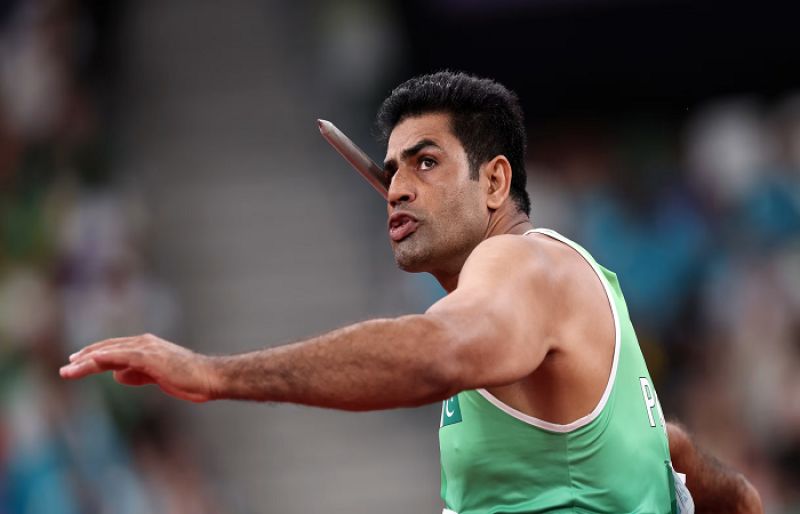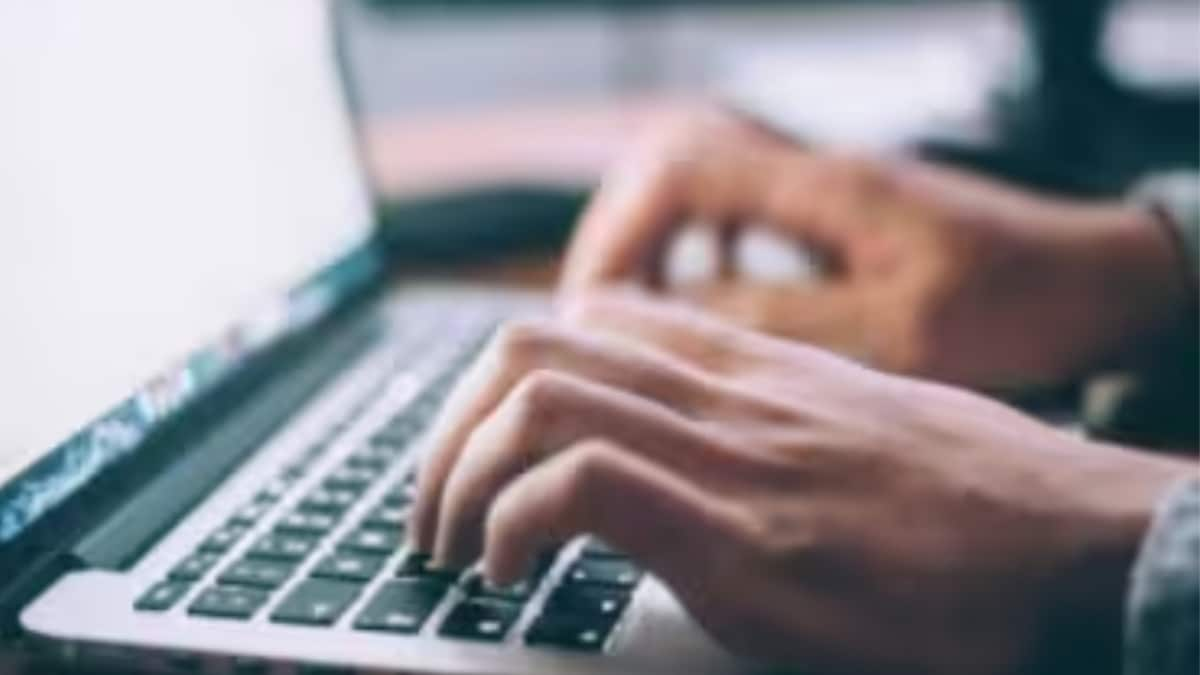Sports
The new World Cup ball is here! How a century of evolution has led to 2026’s Trionda

The 2026 FIFA World Cup kicks off next summer, and the world has got its first look at the official match ball that will be used at the tournament in Canada, Mexico and the United States.
Adidas has unveiled the Trionda, the 15th consecutive match ball supplied for a FIFA World Cup by the manufacturer in a relationship that dates back more than 50 years.
In all, there have been 23 different ball designs used since the first World Cup took place in Uruguay in 1930, with the Adidas era only beginning with the introduction of the classic Telstar ball at the 1970 World Cup in Mexico.
– Can anyone stop Yamal and Spain marching to World Cup glory?
– Ranking every World Cup mascot: From Ciao to World Cup Willie
– World Cup 2026 host cities: What you need to know about the 16 venues
Since the first World Cup was held in 1930, the changing materials and designs used for soccer balls is a way of charting the evolution of the game itself over the past century, from a more unsophisticated era to the ultramodern professionalism of today.
We take a look at the balls used at every World Cup, from the first one staged in Uruguay almost 100 years ago to the one that will be used when the latest edition kicks off next June.
Editors’ note: This article has been updated since it was first published in 2022.
1930: Uruguay (Tiento and T-Model)
There was no official ball produced for the first World Cup, with a number of different designs used throughout the tournament in Uruguay. Unusually, the final between the hosts and rivals Argentina began with a squabble over which country would provide the match ball, leading to a compromise that saw the first half played with Argentina’s model of choice (the Tiento) before being swapped out for the Uruguayans’ preferred ball (the T-Model) at half-time. Argentina were 2-1 up at the interval before Uruguay scored three goals with their larger, heavier ball in the second half to win 4-2 and take their place as inaugural champions of the world. Make of that what you will.
1934: Italy (Federale 102)
Manufactured by ECAS (Ente Centrale Approvvigionamento Sportivi, the Italian government’s central body for sport supplies) in Rome, the Federale was perhaps most notable for being the first World Cup ball to replace thick hardened-leather laces for cotton ones. As well as improving the binding between panels, using softer laces to stitch the ball together made heading the Federale less of a headache, if you’ll excuse the pun. Pictured holding the ball here is former Czechoslovakia captain Frantisek Planicka, who led his nation to the final where they lost 2-1 to the hosts.
1938: France (Allen Coupe du Monde Officiel)
Produced by the Allen factory in Paris, the Coupe du Monde ball was similar in appearance to the Federale with its 13-panel construction, cotton laces and dark brown cowhide outer shell. However, the edges of the Allen’s individual panels were much more rounded than the 1934 ball which made it rounder and more predictable. It also had to be hand-stitched and hand-inflated by a skilled worker to achieve a spherical finish.
1950: Brazil (Superball Duplo T)
Thanks to the technical advances made during the 12-year gap between tournaments due to World War II, the World Cup in 1950 witnessed a minor revolution in the design and manufacture of the official match ball. Gone were the panels and laces of yesteryear and in came the Duplo T, which featured a moulded rubber valve through which the enclosed internal bladder could be inflated by a simple hand pump, much like all modern-day footballs. The concept had already been in use in Argentinian football for many years beforehand but the syringe valve design wasn’t cleared by FIFA for use at World Cups until 1950.
1954: Switzerland (Kost Sport Swiss World Champion)
The Swiss World Champion was the first 18-panel leather ball used at a major football tournament, with a more daring yellow colour and interlocking “W” panels lending the ball a modernised look.
1958: Sweden (Top Star)
Made by Swedish company Sydlader AB, which was founded in 1914 and initially produced leather drive belts for industrial and agricultural machinery. Sydlader was appointed as official ball suppliers for the ’58 World Cup after the Top Star was chosen in a blind test of over 100 designs by a panel of FIFA officials. Each team was then provided with 30 of the balls for use during the tournament. France forward Just Fontaine clearly liked it: He scored 13 goals in six matches in Sweden, a record for a single tournament which has never been bettered.
1962: Chile (Custodio Zamora Mr Crack)
With an 18-panel design inspired by a volleyball, the Crack was a chrome coloured ball that had a smoother, rounder surface (and hence better, more uniform behaviour) than any other World Cup match ball. It was also the last World Cup ball to be provided by a locally tendered company, with Senor Custodio Zamora of San Miguel charged with producing it especially for the tournament. Unfortunately, due to issues with abrasion, brittleness and waterlogging, the Crack was dismissed as inadequate by players and officials alike, leading to a variety of hastily sourced alternatives being used throughout the tournament instead.
1966: England (Slazenger Challenge 4 Star)
After the Crack proved to be anything but, FIFA decided that they would eschew local manufacturers and instead entrust the supply of World Cup match balls to established multinational sports companies. The first such offering was the Slazenger Challenge 4 Star, a 25-panel ball with a latex valve produced in white, bright orange and yellow and selected before the tournament by the English FA in another blind test. The orange variant was chosen for the final as England beat West Germany 4-2 in extra time to lift the Jules Rimet trophy at Wembley. Here, former U.K. Prime Minister Gordon Brown (right) holds the 1966 ball as ex-FIFA president Sepp Blatter marvels at the 1930 version.
1970: Mexico (Adidas Telstar)
The Adidas era began in 1970 with the introduction of the original Telstar, a 32-panel “truncated icosahedron” design that came to define what a typical football would look like for decades to come. Named after a similarly spherical U.S. satellite, a total of 20 Telstars were supplied by Adidas for use at the tournament, meaning they weren’t used in every game, with miscellaneous unmarked brown and white balls used at some matches as well. The distinct two-tone design of the Telstar also made the ball easier to follow for people watching matches at home on black-and-white televisions, though an all-white “Chile Durlast” variation was also used in some games.
1974: West Germany (Adidas Telstar Durlast)
Fundamentally the same design as the original Telstar, the Durlast featured a new, thin polyurethane coating over the leather panels that improved its resistance against waterlogging and abrasion. The tournament was a home triumph both for Adidas and the West Germany team, which lifted the trophy after beating Johan Cruyff’s Netherlands in the final.
1978: Argentina (Adidas Tango)
One of the most iconic soccer balls of all time, the Tango was introduced for the 1978 World Cup and lasted for many years with only a few minor alternations made to the design. The ’78 Tango consisted of 20 hexagonal handstitched panels coated in a thin plastic “Durlast” membrane to help guard against waterlogging. The graphic design also used triangular markings on each panel to create the illusion of white circles all over the surface, which helped players track the spin of the ball through the air more easily.
1982: Spain (Adidas Tango España)
So widely popular was the Tango design that it lasted Adidas from 1978, through the 1982 World Cup in Spain and on to the European Championships and Olympic Games of 1988. The ’82 España edition received only very minor cosmetic updates, though the seams were rubberised to improve its water resistance. The España is also notable for being the last fully leather ball to be used at a World Cup tournament before the dawn of the synthetic era.
1986: Mexico (Adidas Azteca)
While the Tango was still in use, Adidas decided that a brand new ball was required for the 1986 World Cup and hence the Azteca was created. While resembling the Tango with its hand-sewn 32-panel design, the Azteca was manufactured using 100% synthetic materials and the triangular designs on the panels featured elaborate detailing inspired by Aztec frescoes and culture. It also holds a unique place in football history by being the ball that Argentina’s Diego Maradona punched over the head of England goalkeeper Peter Shilton for his infamous “Hand of God” photo en route to winning the tournament.
1990: Italy (Adidas Etrusco Unico)
Much like the Azteca before it, the Etrusco Unico drew inspiration for its design by the ancient culture of the World Cup host nation. Rather than Aztec art, the 20 triangular triads on the Unico ball were gilded with a depiction of the lions heads regularly found in countless works of Etruscan sculpture, jewellery, fine art and architecture. The Etrusco Unico was also the first World Cup ball to feature an internal layer of black polyurethane foam beneath the outer shell to help provide further protection against waterlogging and to improve the durability and rebound quality.
Although its name conjured images of man’s ancient quest to reach the stars and the 25th anniversary of the Apollo 11 moon landing, the Questra was in essence the latest in a succession of Tango clones. Visually very similar to the three World Cup match balls that preceded it, the Questra featured the same pentagonal panel design used on the Azteca and Estruco Unico, though the flourishes in the detailing this time reflected the wonders of space exploration. The Questra was also much lighter than previous World Cup balls, leading attacking players to commend its ability to swerve and curl and goalkeepers to bemoan its unpredictability in the air.
1998: France (Adidas Tricolore)
Fittingly, the Tricolore was the first multicoloured ball to be used at a World Cup, with the traditional monochrome palette updated to reflect the traditional colours of the host nation: red, white and blue. While the fundamental design of the ball remained unchanged, the cockerel and the flag were selected as the traditional symbols of France to be incorporated into the triad motif. The Tricolore was also the last World Cup match ball to bear the now-iconic “Tango” aesthetic as Adidas began to experiment with new manufacturing techniques and altogether more daring colourways.
The Fevernova saw Adidas break away from the traditional Tango design in favour of a radical offset graphic inspired by Asian culture, which consisted of a three-pronged golden shape (inspired by a Japanese “tomoe” symbol) and red streaks meant to resemble the ancient art of calligraphy. Despite being constructed using 11 different layers, the ball was widely criticised for being far too light and unpredictable, largely as a result of the airy synthetic foam used as padding inside the rubbery polyurethane exterior.
2006: Germany (Adidas Teamgeist and Teamgeist Berlin)
The 2006 World Cup in Germany was the first tournament that saw a second, alternative design of the official match ball produced especially for use during the latter stages of the competition. The standard Teamgeist (meaning “team spirit”) was white with black oval-shaped banding and constructed using just 14 thermally bonded synthetic panels to create a rounder, more precise and almost entirely waterproof ball. A special golden version was produced for the final in Berlin. However, due to having fewer seams, air resistance was reduced to the point that several prominent players complained about the ball’s movement in the air, something which was fast becoming a pre-tournament tradition.
2010: South Africa (Adidas Jabulani and Jo’bulani)
Largely remembered as one of the most troublesome World Cup match balls of all time, the Jabulani had a lively name (translating from the Zulu phrase meaning “be happy”) and an even livelier tendency to dip, swerve and balloon away into the terraces. Made from eight moulded panels, the surface of the Jabulani was also textured with thin ridges and grooves in an effort to improve aerodynamics. However, after the opening bouts of the competition were blighted with handling errors several goalkeepers including Gianluigi Buffon and Julio Cesar went public with their concerns over the unpredictability of the ball. As in 2006, a special gold-tinted version of the Jabulani was introduced for the final staged in Johannesburg, hence the name.
2014: Brazil (Adidas Brazuca and Brazuca Rio)
The first World Cup ball to be named by public vote, the Brazuca was made from six bonded polyurethane panels and decked out in a vivid graphic inspired by Bahia bands — traditional Brazilian good luck bracelets made from colourful yarn. With the Jabulani deemed something of a failure, the emphasis was on creating an aerodynamically stable ball that performed consistently in all conditions. Thankfully, the Brazuca was able to avoid the pitfalls of its direct predecessor after undergoing two years of rigorous testing prior to the tournament. Once again, a special version was produced for the grand final in Rio de Janeiro with the green, red and blue flashes of the standard Brazuca replaced by green, gold and black.
2018: Russia (Adidas Telstar 18 and Telstar 18 Mechta)
Harking back to the glory days of the early 1970s, Adidas updated their classic Telstar design for use in Russia. Rather than using 32 handstitched panels, the modernised Telstar was constructed from just six panels thermally bonded to create a rounder, smoother, more consistent surface. However things got off to an ominous start when two balls burst during a group-stage game between France and Australia. As has become tradition, an alternative design was rolled out for the knockout phase, with the Telstar 18 Mechta (“mechta” being a Russian word for ambition) being unveiled. The only real difference being the red speckles on the shell.
2022: Qatar (Adidas Al Rihla)
The Al Rihla (a name that translates from Arabic into English as “the journey”) was a 20-panel design that Adidas said was inspired by the architecture, art and national flag of Qatar. In order to reduce air resistance at what proved to be one of the hottest World Cup finals ever, the ball was made to appear completely seamless and the shape of the thermally bonded panels were directly inspired by the sails of the famous Dhow boats that are emblematic of the Gulf state.
2026: United States, Mexico and Canada(Adidas Trionda)
The Trionda features a swirled graphic that mixes red, green and blue — a tricolor designed to represent the national colors of all three of the host countries. The red panels feature the Canadian maple leaf, the blue panels are spangled with stars, and the green swathes have a graphic inspired by the symbolic Aztec eagle.
The detailing is then added in gold, which serves as a visual reference to the World Cup trophy itself. Furthermore, the name is a nod to the 2026 tournament’s triumvirate of North and Central American hosts, with “Tri” obviously meaning “three” and “Onda” meaning “wave” in both Spanish and Portuguese.
The entire ball is made up of just four panels, with debossed lines and embossed country icons to create a surface which, according to the manufacturer, “produces optimal in-flight stability by ensuring there is sufficient and evenly distributed drag as it travels through the air.”
We’ll have to wait until next summer to find out exactly what that means for goalkeepers.
Sports
‘The canaries in the coal mine’: Why teams like Man United invest in player care

Each day, Manchester United‘s players drive down Birch Road, occasionally stopping for the horses from the Carrington Riding Centre or a cyclist, and turn into the club’s training ground. When the autograph seekers are satisfied and the entry barriers are lifted, they turn in front of the red neon “Manchester United” sign and head toward the first team parking lot behind the main building.
With their sports cars and luxury SUVs locked and their travel bags under their arms, they walk inside.
Once in the area known as the “players’ corridor,” an office behind glass panels is immediately on the left side, with a large desk in the middle and chairs on either side. On the back wall is a large flat-screen TV, and there are telephones and laptops in the room. The door is always open.
But it’s not an office for manager Ruben Amorim, CEO Omar Berrada or director of football Jason Wilcox. Instead, this room is reserved for the player care team. It’s the department that works to ensure each squad member has everything they need off the pitch so they can perform on it.
Player care departments aren’t unique to United. Across the Premier League, clubs are investing more to make sure their players have everything they need to perform at their optimum level. At United’s training ground, these services are front and centre for a reason.
The goal? Players leaving their problems at the door, feeling better and heading into training with a clear mind, ready to focus on football.
What is player care?
If the manager’s job is to oversee what happens at the training ground, it’s the responsibility of the player care department to look after the rest. Anything and everything a player might encounter can land on their desk, most of it not football-related.
“It’s based around the person rather than the player,” player care expert Hugo Scheckter told ESPN. “A very vague way of putting it is that it’s everything that affects a player that’s not football or medical. For three or four hours a day, players are at the training ground. Everything outside of that can be covered by player care.
“It could be personal-developmental stuff, giving them the life skills to improve themselves, welfare stuff like signposting to mental health provisions, or operational things like relocations and problem-solving. We’re trying to be that resource where they can remove the stress away from life to focus on football.”
– Ian Darke’s PL stars so far: Haaland, Caicedo, more
– If the World Cup started today, who will win it?
– Connelly: Lessons learned after 10 games in top leagues
Scheckter has worked for Premier League clubs, including West Ham and Brentford, and in 2020, he set up the Player Care Group. He has years of experience helping players find houses, pick schools for their children, tax cars and sort match tickets.
Other times, it means dealing with emergencies such as a car accident or home break-in. Occasionally, the problem is more unusual.
“I had one player who asked me to hunt a bird that was scaring his girlfriend. He wanted it shot, and I had to say, ‘We don’t do that in England,'” Scheckter said.
“My solution was to get an ultrasonic bird that basically scared it away, but his first thought was can we [kill it]? Ultimately, they wanted a problem solved, and I can understand that. The bird was tapping on the window all the time, and his girlfriend was scared of birds. So we got a little £10 thing on Amazon to scare it away.
“It can seem a small thing, but then on the other hand, if he’s awake all night or always getting complaints from his girlfriend, it can affect performance. It sounds silly, but it can be quite important as well.”
‘The canaries in the coal mine’
In the search for marginal gains and a competitive edge, clubs are increasingly taking player care more seriously. Foster and Partners, the London-based architectural firm responsible for the £50m revamp of Manchester United’s Carrington training ground, purposely put the player care office toward the front of the players’ entrance to the building.
It’s a similar story at clubs all over the world.
“The player care team are like the canaries in the coal mine,” one high-level source at a Premier League club told ESPN. “Often, they’re the ones who can spot the first sign of trouble.
“Coaches and medical staff will know everything about a player’s performance, but the player care or player support team know far more about their non-football lives than a manager or coach. And the two things are intertwined. One impacts the other.”
Scheckter adds: “I think it used to be a very reactive service where a player would bring a problem in, and they would try and solve it. Now, I think you’re seeing more and more clubs who are trying to get ahead of those problems, so they don’t even appear at all. Or if they do, that they’re well-managed, and there’s a process in place.”
Investment in player care varies from club to club. Player care teams can range from one or two employees to five or more. Most Premier League clubs have separate departments for their men’s, women’s and academy sides.
Most of the time, however, the department’s effectiveness depends on how seriously it’s taken by the first-team manager and his staff. Some coaches can be quite dismissive of anything that goes on outside the training ground, but others are keen to take a more holistic approach.
“A lot of time, it’s club culture-dependent,” Scheckter said. “I’ve had managers who are not negative towards it, but kind of apathetic. It depends from manager to manager. With some, you just stay out of the way, and with others, you’re really involved at the top table in management meetings every day. That’s really exciting as well.”
There are clear benefits to including the player care team in performance meetings that include other key heads of department.
“You’ve got the nutritionist there, you’ve got the fitness coaches there, you’ve got the coaching staff there, the manager there. And the conversation can be about a player who has lost three kilos in the last month,” Scheckter said.
“I can be like, ‘Oh well, that’s because his girlfriend is away and he doesn’t cook.’ So next time his girlfriend goes away, we need to make sure he’s getting food delivered or we get a chef in, or whatever it is. The nutritionist in isolation might be thinking he’s unwell or he’s skipping meals. It’s good to have that joined-up approach.
“I’ve gone to managers before and said privately, ‘Look, his mother died a year ago on this day, just so you are aware,’ and they’ll go, ‘OK, thank you. That’s why he was off today in training.'”
With football becoming an increasingly global game, there’s pressure on player care teams to help players new to the country settle quickly. It’s not unusual for departments to be in touch with counterparts at rival clubs, especially if they have players of the same nationality.
“If we’ve got a player from Brazil, we might get in touch with another club local to us if they also have a Brazilian player,” one Premier League source said. “It’s in our interest to do that, share intelligence, and help build a wider network for a player’s family to help them feel settled.”
1:12
Are Manchester United getting smarter with their transfer deals?
Mark Ogden explains why there’s optimism around Manchester United’s transfer strategy after turning down the chance to sign Chelsea’s Roméo Lavia.
In many circumstances, the role of the player care team extends beyond the players.
“The partners, especially at the Premier League level, none of them tend to work or very few of them tend to work, and so you have a situation where they’ve just sat around and so trying to provide a purpose for them and a direction for them is really important,” Scheckter said.
“We see it more and more where the player is really happy, but the partner or the family aren’t, and so we’re seeing clubs invest more and more into family programs.
“It can be hard moving to a new country. We’re definitely seeing that as a bigger issue, where players are happy, partners are not, and then that’s leading to a player either wanting to leave or talking about potentially having to leave, which is a disaster for clubs.”
Whether it’s to take on the role of wellness professional or concierge, the job of the player care team is to keep players happy. But that doesn’t mean clubs want to pamper their stars.
“There’s a balance,” one source told ESPN. “We don’t want players who are detached from everyday life. But we also don’t want players worrying about renewing a passport or a dispute with a landlord because that takes up mental space.
“There’s a growing understanding throughout sport that mental well-being is important to performance. We want to take away the burden of the stresses associated with everyday life as much as we can so players can focus on training and matches.”
‘Make sure the athletes are the best they can be’
More often than not, the player care team members work in the background. On other occasions, they’re thrust into the spotlight.
After West Ham failed to win for more than two months, new manager Nuno Espirito Santo revealed that the club’s player care department sourced baby pictures of the players to decorate the dressing room to serve as motivation ahead of Newcastle’s visit to the London Stadium. It worked, and West Ham won 3-1.
“It was a surprise for everybody,” Nuno said afterward. “The player care [team] really do things really nice. They did it in a really nice way, the player care. The players didn’t know.
“It’s nice to see when we are young and had dreams. For us, it is important to go back to that feeling of being young and happy and try to enjoy things.”
Scheckter tells a story about a player he encountered at the start of his career in player care who appeared to be fine on the surface but left at the end of the season because his partner hadn’t settled.
There also have been small wins that can make all the difference.
“There was a player who was consistently late for team meetings and he was an African player, and he got dropped from a game,” Scheckter said. “The manager was basically like, ‘He’s just not professional, he’s not focused.’ So, I went and spoke to him, and he was very upset about it.
“I said to him, ‘Why are you late? He said, ‘Well, where I’m from … we don’t have reliable transport, we don’t have reliable timekeeping devices, and meeting time in my culture and my life has always been a suggestion.’ And I’m like, ‘Well, OK, I appreciate that, but in the UK or in England, if you’re not five minutes early, you’re late.
“And so I said, ‘OK, let’s work with you.’ I would go and knock on his door or go get him before everything he had to be at for a couple of weeks, and after those couple of weeks, then he kind of got it and was on time. It’s about working proactively to solve problems and make sure the athletes are the best they can be.”
In the end, the goal is always the same, whether the issue is timekeeping, staying on top of the pressures of the game, or dealing with a bird that won’t stop tapping on a window.
Sports
Transfer rumors, news: Adeyemi would prefer Arsenal move over Man United

Borussia Dortmund‘s Karim Adeyemi prefers a move to Arsenal over Manchester United, while Barcelona striker Robert Lewandowski is wanted by AC Milan. Join us for the latest transfer news and rumors from around the globe.
Transfers home page | Men’s grades | Women’s grades
TOP STORIES
– Messi ‘first phone call’ to make for Barcelona presidential candidate
– Sources: Man United rejected Chelsea’s Lavia, Nkunku in Garnacho deal
– Real Madrid striker Mbappé ups PSG compensation claim to $300m
TRENDING RUMORS
– Manchester United are one of the clubs to have discussed Borussia Dortmund forward Karim Adeyemi with Jorge Mendes, TEAMtalk reports, adding that the 23-year-old favors a move to Arsenal over any other interested club. Adeyemi has a contract that runs until 2027 but could leave before then, and the Germany international is open to making a move to the Premier League as he feels he is well suited to the game in England.
– AC Milan want to sign Robert Lewandowski as a free agent when Barcelona striker’s contract expires in the summer, Tuttosport reports. The Rossoneri believe that the Poland international, 37, can further strengthen a winning mentality that coach Massimiliano Allegri and veteran midfielder Luka Modric have helped to develop. The latter has been so influential that Milan have already decided that they want to take up the option of a one-year renewal of the 40-year-old’s contract.
– Arsenal, Manchester City, Manchester United and Newcastle United are among the clubs actively monitoring the situation of Eintracht Frankfurt left-back Nathaniel Brown, according to TEAMtalk. The 22-year-old signed a long-term contract that runs until 2030, but the deal includes a gentleman’s agreement or release mechanism that could be activated by clubs in certain European competitions. The exact figure is undisclosed but is estimated to be as much as €55 million.
– Roma are eyeing Manchester United’s Joshua Zirkzee to strengthen their attack in January, according to Sky Sports Italia reports. The former Bologna player’s five appearances for the Red Devils this season have all been as a substitute, and he has only scored seven goals for the club since arriving at Old Trafford in the summer of 2024. However, Roma believe the 24-year-old’s Serie A experience can help them in their title bid — they are level on points with leaders Inter Milan after 11 games this season — while The i Paper reports that Everton and West Ham United are also keen.
– Sunderland‘s Granit Xhaka is a prominent name on Juventus‘ list of targets as the Serie A club looks to strengthen their midfield in January, according to Tuttosport. They had already looked to sign the 33-year-old in the summer but the move fell through. The Bianconeri believe that the Switzerland international’s leadership, technical ability, physicality and tactical intelligence could help them. Even so, it is uncertain whether they can agree a deal with the Black Cats with €15m potentially being required.
EXPERT TAKE
1:45
Cash: Lewandowski still at the level of Kane & Haaland
Matty Cash praises Robert Lewandowski ahead of Poland’s World Cup qualifiers.
OTHER RUMORS
– Napoli continue to look at Kobbie Mainoo with Manchester United only willing to let the midfielder leave on loan. (Calciomercato)
– Chelsea will face competition from Juventus for AC Milan goalkeeper Mike Maignan, whose contract expires at the end of the season. (Football Insider)
– Manchester United winger Jadon Sancho, who is on loan at Aston Villa, has held meaningful discussions with representatives from Fenerbahce, Galatasaray and Besiktas. (Ekrem Konur)
– Borussia Dortmund have joined Manchester United in the race to sign 16-year-old AIK striker Kevin Filling. There is no agreement with any club but he could move in the winter window. (Florian Plettenberg)
– Barcelona have submitted an offer worth between €25m and €30m for Vasco da Gama winger Rayan. (Ekrem Konur)
– Brighton & Hove Albion is one of the Premier League clubs who could try to sign Real Madrid striker Gonzalo García in January. (Daily Mail)
– AC Milan could look to sign a striker in January unless Santiago Giménez and Christopher Nkunku improve, and West Ham United’s Niclas Füllkrug is being evaluated. (Corriere dello Sport)
– AFC Bournemouth are exploring a move for Nordsjaelland midfielder Caleb Yirenkyi, who is valued at £20m and has received interest from other Premier League clubs including Arsenal. (Daily Mail)
– Aston Villa are willing to accept offers for Emiliano Martínez in January and are exploring alternative goalkeeper options. (Football Insider)
– Arsenal are stepping up their interest in twins Edwin and Holger Quintero from Independiente Del Valle. (Daily Mail)
– Leeds United are open to letting Willy Gnonto leave in January if they receive a suitable offer, as they want to make reinforcements of their own. (TEAMtalk)
– Udinese will request €40m for Arthur Atta and don’t want the midfielder to leave during the winter window despite interest from clubs in Serie A and abroad. (Nicolò Schira)
– Tommaso Baldanzi‘s agent has held a positive meeting with Hellas Verona, who have re-opened talks to sign the Roma attacking midfielder on loan with an option to make the deal permanent. (Nicolò Schira)
– The prospect of Luis Henrique leaving Inter Milan in January can’t be ruled out. (Tuttosport)
Sports
Arshad Nadeem Clinches Gold medal at 2025 Islamic Solidarity Games – SUCH TV

In a spectacular display of skill and dominance, Pakistan’s star javelin thrower Arshad Nadeem captured the gold medal at the Islamic Solidarity Games 2025 in Riyadh, successfully defending his previous title and reinforcing his status as a national hero.
The competition, held at the renowned Prince Faisal bin Fahd Stadium, highlighted Arshad’s exceptional talent as he outperformed a field of seven athletes, including fellow Pakistani Yasir Sultan, who claimed a well-earned silver medal.
The javelin final quickly became one of the standout events of the Games, with Arshad and Yasir entering as the leading contenders based on their season-best throws.
Arshad, coming off his Olympic gold victory, delivered a remarkable performance, recording a winning throw of 83.05 meters on his second attempt out of six.
This throw not only secured him the gold but also demonstrated his consistency and composure under pressure.
Yasir Sultan, who had previously won bronze at the 2023 Asian Championships, complemented Arshad’s triumph with a silver, giving Pakistan a one-two finish in the event.
Their impressive performances highlighted Pakistan’s growing strength in athletics, particularly in field events like the javelin.
Another Pakistani competitor, Salman Iqbal Butt, also participated but did not reach the podium in this highly competitive final.
The Islamic Solidarity Games 2025, which bring together athletes from Muslim-majority nations, have once again provided a dynamic platform for both emerging talents and established stars to showcase their abilities.
Arshad Nadeem’s gold adds to his illustrious collection, inspiring young athletes across Pakistan and beyond. As the games continue in Riyadh, fans are eagerly anticipating more medals from the Pakistani contingent.
This triumph serves as a testament to the rigorous training and dedication of Pakistan’s track and field athletes, positioning them strongly for future international competitions.
-

 Tech5 days ago
Tech5 days agoNew carbon capture method uses water and pressure to remove CO₂ from emissions at half current costs
-

 Politics6 days ago
Politics6 days agoBritish-Pakistani honoured for transforming UK halal meat industry
-

 Business5 days ago
Business5 days agoThese 9 Common Money Mistakes Are Eating Your Income
-

 Sports5 days ago
Sports5 days agoTexas A&M officer scolds South Carolina wide receiver after touchdown; department speaks out
-

 Sports6 days ago
Sports6 days agoApple scrapping MLS Season Pass service in ’26
-

 Business6 days ago
Business6 days agoWhat’s behind Rachel Reeves’s hokey cokey on income tax rises?
-

 Tech6 days ago
Tech6 days ago$25 Off Exclusive Blue Apron Coupon for November 2025
-

 Fashion6 days ago
Fashion6 days agoAfter London, Leeds and Newcastle, next stop Glasgow for busy Omnes






